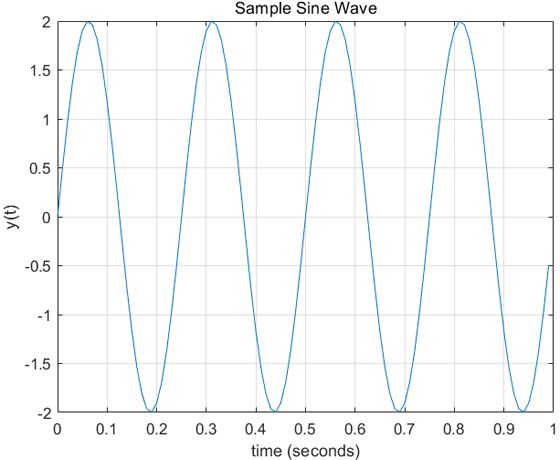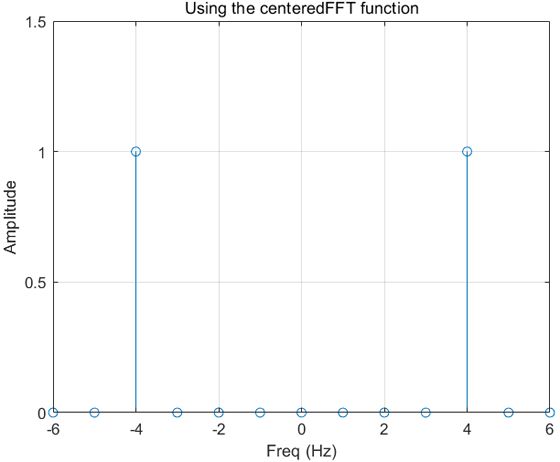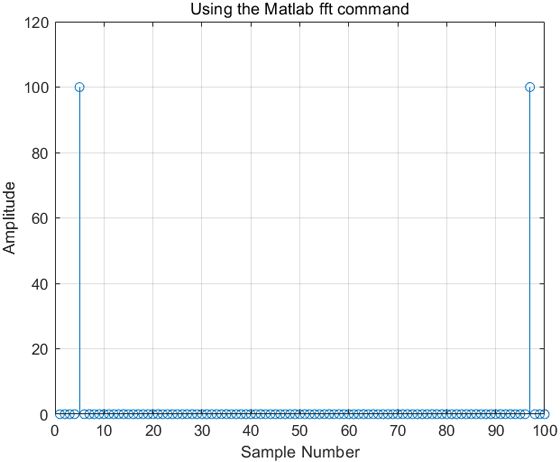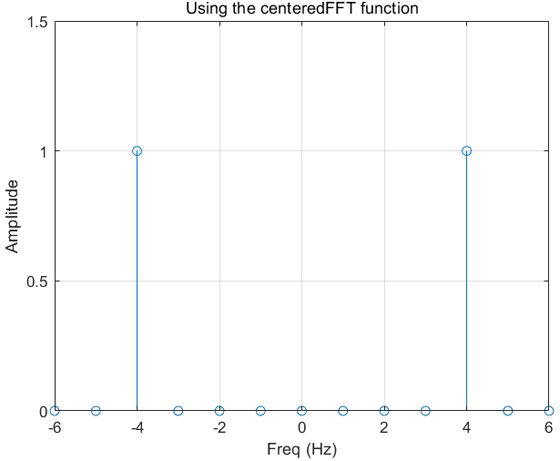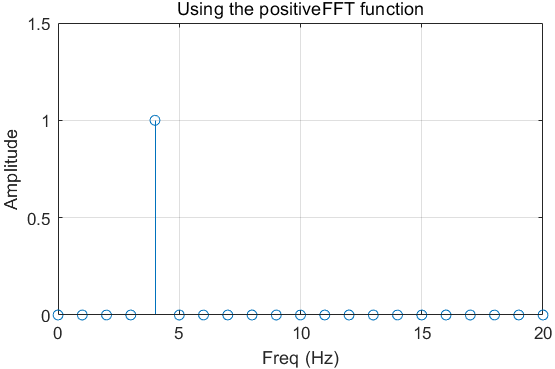怎么用matlab进行频域分析法,如何用Matlab进行频域分析?
Matlab可以说是一个非常有用且功能齐全的工具,在通信、自控、金融等方面有广泛的应用。
本文讨论使用Matlab对信号进行频域分析的方法。
说到频域,不可避免的会提到傅里叶变换,傅里叶变换提供了一个将信号从时域转变到频域的方法。之所以要有信号的频域分析,是因为很多信号在时域不明显的特征可以在频域下得到很好的展现,可以更加容易的进行分析和处理。
FFT
Matlab提供的傅里叶变换的函数是FFT,中文名叫做快速傅里叶变换。快速傅里叶变换的提出是伟大的,使得处理器处理数字信号的能力大大提升,也使我们生活向数字化迈了一大步。
接下来就谈谈如何使用这个函数。
fft使用很简单,但是一般信号都有x和y两个向量,而fft只会处理y向量,所以想让频域分析变得有意义,那么就需要用户自己处理x向量
一个简单的例子
从一个简单正弦信号开始吧,正弦信号定义为:
y(t)=2sin(2πf0t)
我们现在通过以下代码在Matlab中画出这个正弦曲线
1 fo = 4; %frequency of the sine wave
2 Fs = 100; %sampling rate
3 Ts = 1/Fs; %sampling time interval
4 t = 0:Ts:1-Ts; %sampling period
5 n = length(t); %number of samples
6 y = 2*sin(2*pi*fo*t); %the sine curve
7
8 %plot the cosine curve in the time domain
9 sinePlot = figure;
10 plot(t,y)
11 xlabel('time (seconds)')
12 ylabel('y(t)39;)
13 title('Sample Sine Wave')
14 grid
这就是我们得到的:
当我们对这条曲线fft时,我们希望在频域得到以下频谱(基于傅里叶变换理论,我们希望看见一个幅值为1的峰值在-4Hz处,另一个在+4Hz处)
使用FFT命令
我们知道目标是什么了,那么现在使用Matlab的内建的FFT函数来重新生成频谱
1 %plot the frequency spectrum using the MATLAB fft command
2 matlabFFT = figure; %create a new figure
3 YfreqDomain = fft(y); %take the fft of our sin wave, y(t)
4
5 stem(abs(YfreqDomain)); %use abs command to get the magnitude
6 %similary, we would use angle command to get the phase plot!
7 %we'll discuss phase in another post though!
8
9 xlabel('Sample Number')
10 ylabel('Amplitude39;)
11 title('Using the Matlab fft command')
12 grid
13 axis([0,100,0,120])
效果如下:
但是注意一下,这并不是我们真正想要的,有一些信息是缺失的
·x轴本来应该给我们提供频率信息,但是你能读出频率吗?
·幅度都是100
·没有让频谱中心为0
为FFT定义一个函数来获取双边频谱
以下代码可以简化获取双边频谱的过程,复制并保存到你的.m文件中
1 function [X,freq]=centeredFFT(x,Fs)
2 %this is a custom function that helps in plotting the two-sided spectrum
3 %x is the signal that is to be transformed
4 %Fs is the sampling rate
5
6 N=length(x);
7
8 %this part of the code generates that frequency axis
9 if mod(N,2)==0
10 k=-N/2:N/2-1; % N even
11 else
12 k=-(N-1)/2:(N-1)/2; % N odd
13 end
14 T=N/Fs;
15 freq=k/T; %the frequency axis
16
17 %takes the fft of the signal, and adjusts the amplitude accordingly
18 X=fft(x)/N; % normalize the data
19 X=fftshift(X); %shifts the fft data so that it is centered
这个函数输出正确的频域范围和变换后的信号,它需要输入需要变换的信号和采样率。
接下来使用前文的正弦信号做一个简单的示例,注意你的示例.m文件要和centeredFFT.m文件在一个目录下
1 [YfreqDomain,frequencyRange] = centeredFFT(y,Fs);
2 centeredFFT = figure;
3
4 %remember to take the abs of YfreqDomain to get the magnitude!
5 stem(frequencyRange,abs(YfreqDomain));
6 xlabel('Freq (Hz)')
7 ylabel('Amplitude39;)
8 title('Using the centeredFFT function')
9 grid
10 axis([-6,6,0,1.5])
效果如下:
这张图就满足了我们的需求,我们得到了在+4和-4处的峰值,而且幅值为1.
为FFT定义一个函数来获取右边频谱
从上图可以看出,FFT变换得到的频谱是左右对称的,因此,我们只需要其中一边就能获得信号的所有信息,我们一般保留正频率一侧。
以下的函数对上面的自定义函数做了一些修改,让它可以帮助我们只画出信号的正频率一侧
1 function [X,freq]=positiveFFT(x,Fs)
2 N=length(x); %get the number of points
3 k=0:N-1; %create a vector from 0 to N-1
4 T=N/Fs; %get the frequency interval
5 freq=k/T; %create the frequency range
6 X=fft(x)/N; % normalize the data
7
8 %only want the first half of the FFT, since it is redundant
9 cutOff = ceil(N/2);
10
11 %take only the first half of the spectrum
12 X = X(1:cutOff);
13 freq = freq(1:cutOff);
和前面一样,使用正弦信号做一个示例,下面是示例代码
1 [YfreqDomain,frequencyRange] = positiveFFT(y,Fs);
2 positiveFFT = figure;
3 stem(frequencyRange,abs(YfreqDomain));
4 set(positiveFFT,'Position39;,[500,500,500,300])
5 xlabel('Freq (Hz)')
6 ylabel('Amplitude39;)
7 title('Using the positiveFFT function')
8 grid
9 axis([0,20,0,1.5])
效果如下:
